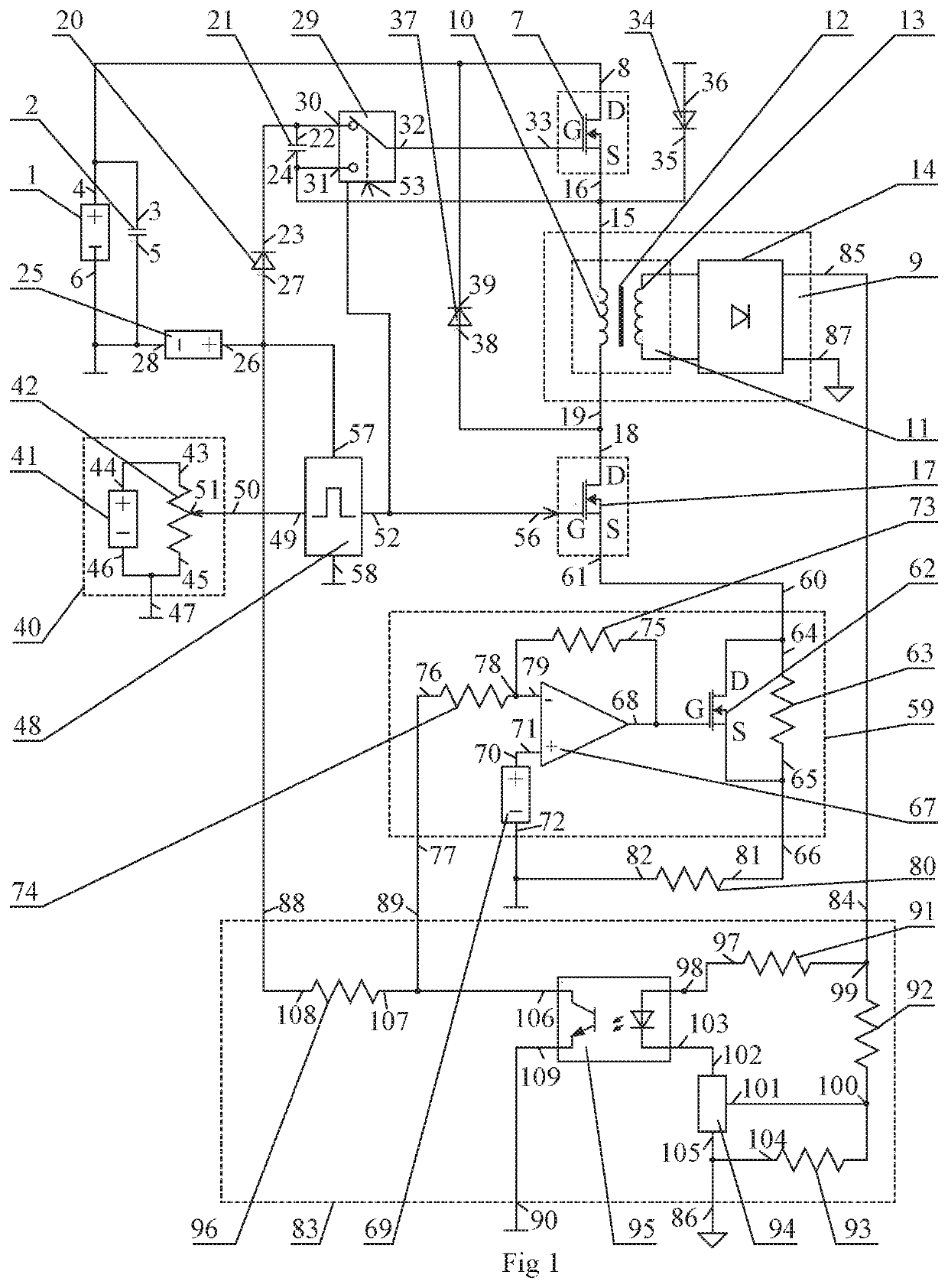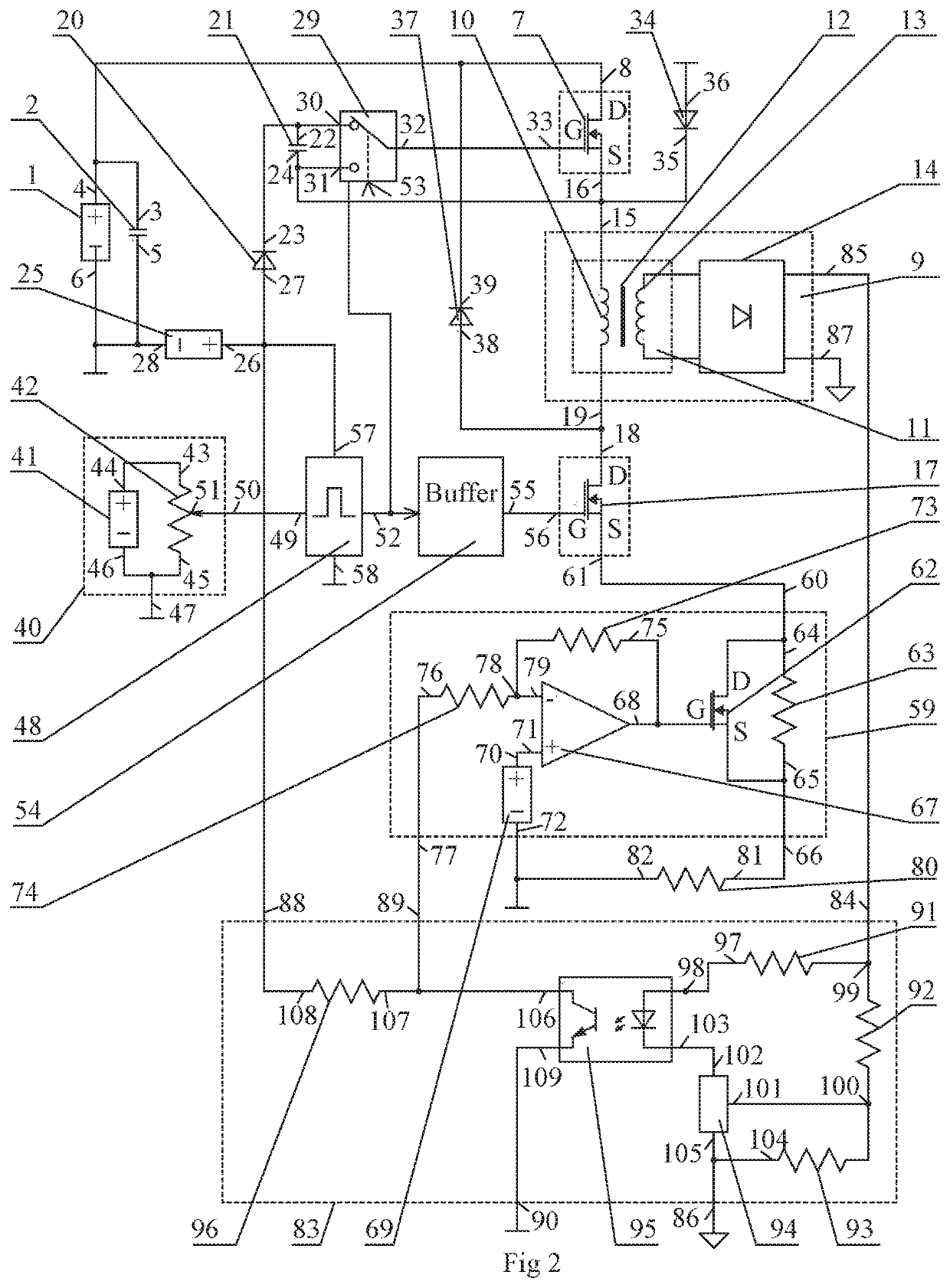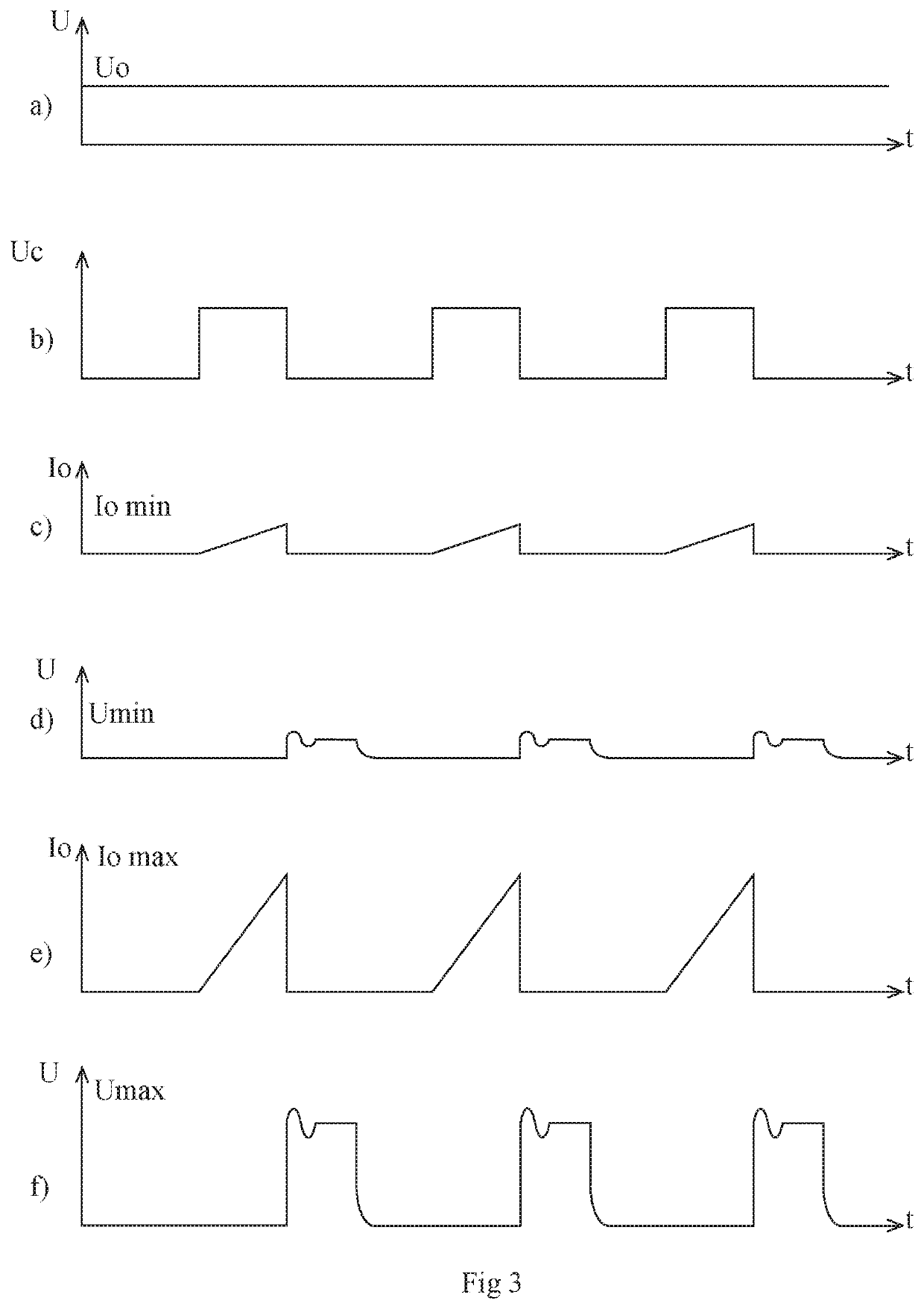DC voltage-pulse voltage converter
a voltage converter and dc technology, applied in the field of electric engineering, can solve problems such as affecting operation, due attention, and disturbing nearby electronics
- Summary
- Abstract
- Description
- Claims
- Application Information
AI Technical Summary
Benefits of technology
Problems solved by technology
Method used
Image
Examples
Embodiment Construction
[0062]According to FIG. 1, the proposed DC voltage—pulse voltage converter (DCVPVC) comprises specifically:
[0063](a) a high DC voltage source (HDCVS) 1;
[0064](b) a first (storage) capacitor 2 connected by one (a first) plate 3 thereof to a positive terminal 4 of the HDCVS 1 and connected by another (a second) plate 5 thereof to a negative terminal 6 of the HDCVS 1;
[0065](c) a first controllable switch 7 (including, for example, a MOS transistor) connected by a first terminal 8 thereof (by the drain of the MOS transistor) to the positive terminal 4 of the HDCVS 1;
[0066](d) an inductive load 9 made, for example, as a winding on a magnetic core and including a primary winding 10 of a transformer 11 on a ferromagnetic core 12, a secondary winding 13 of the transformer 11 being connected to a rectifier 14 connected in turn to a load thereof (not shown), the inductive load 9 being connected by one (a first) terminal 15 thereof to a second terminal 16 (to the source of the MOS transistor) ...
PUM
 Login to View More
Login to View More Abstract
Description
Claims
Application Information
 Login to View More
Login to View More - R&D
- Intellectual Property
- Life Sciences
- Materials
- Tech Scout
- Unparalleled Data Quality
- Higher Quality Content
- 60% Fewer Hallucinations
Browse by: Latest US Patents, China's latest patents, Technical Efficacy Thesaurus, Application Domain, Technology Topic, Popular Technical Reports.
© 2025 PatSnap. All rights reserved.Legal|Privacy policy|Modern Slavery Act Transparency Statement|Sitemap|About US| Contact US: help@patsnap.com



